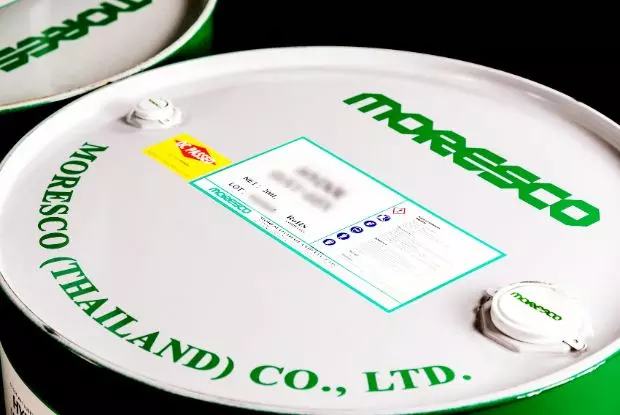Breaking the Lifespan Barrier: How Encapsulation Adhesives are Becoming the Critical Strategy for PSC Commercialization
Perovskite Solar Cells (PSCs) have emerged as the focus of next-generation photovoltaic technology, thanks to their outstanding power conversion efficiency (PCE) and low manufacturing cost. However, the environmental stability of PSCs remains a major obstacle to their large-scale commercialization. With ongoing research, innovative encapsulation technology and specialized adhesives are rapidly becoming the critical solutions for enhancing PSC stability and extending their lifespan.
Perovskite Material Challenges
Perovskite materials are organic-inorganic hybrids with an ABX₃ structure, where A is a monovalent cation (like methylammonium or cesium), B is a divalent metal (such as lead or tin), and X is a halide anion (like iodide or bromide). These materials have a high light absorption coefficient and excellent charge transport, making them ideal for high-efficiency solar cells. However, perovskites are highly sensitive to moisture, oxygen, and heat, which can cause material degradation, lower efficiency, and shorter operational lifespan.
Perovskite Solar Cells and Encapsulation Adhesives: Key Strategies to Enhance Stability and Performance
To overcome these challenges, researchers use several stabilization strategies, including:
■ Optimizing the perovskite crystal structure
■ Enhancing Charge Transport Layer (CTL) materials
■ Applying advanced encapsulation adhesives, which block moisture and oxygen while providing mechanical protection, significantly extending the lifetime of Perovskite Solar Cells (PSCs).
The Application Advantage of Encapsulation Adhesives in PSCs
Serving as a crucial protective barrier for PSCs, encapsulation adhesives must possess the following key properties to shield the perovskite layer from environmental damage:
- Ultra-High Barrier Performance: Adhesives must feature extremely low Water Vapor Transmission Rate (WVTR) and Oxygen Transmission Rate (OTR) to minimize moisture and oxygen penetration.
- Superior Thermal Stability and UV Resistance: The adhesive must remain stable under high temperatures and prolonged UV exposure, preventing thermal or UV-induced photodegradation.
- Excellent Adhesion and Flexibility: Especially for flexible PSCs, the adhesive needs to withstand mechanical stress to ensure stable performance.
Encapsulation Technology Drives PSC Commercialization
Encapsulation technology plays a vital, central role in the stability and commercial viability of PSCs. For instance, in perovskite-silicon tandem cells, high-quality liquid hot melt adhesives not only deliver high barrier performance but also enhance the interfacial adhesion between materials, boosting overall structural stability. Furthermore, selecting the right encapsulation materials can mitigate mechanical stress on flexible PSCs, ensuring stable output across various application scenarios.
Hai Lu Jya He (HLJH) recognizes the pressing industry demand for high-barrier, weather-resistant adhesives for PSCs. Our High-Performance Moisture Barrier Solutions are designed to provide your perovskite cells with exceptional moisture-sealing capability to effectively counteract environmental erosion, serving as a critical foundation for enhancing PSC long-term stability and achieving commercial success.
Future Prospects: A Sustainable Energy Solution
With ongoing improvements in encapsulation technology, the stability of Perovskite Solar Cells (PSCs) has greatly increased. Their high efficiency, flexibility, and semi-transparency make them ideal for Building-Integrated Photovoltaics (BIPV), allowing effective power generation without blocking natural light. PSCs can also be applied to irregular surfaces, opening opportunities for wearable devices and portable electronics.
Performance highlights
■ Single-junction perovskite cells can reach 33% theoretical efficiency.
■ Tandem structures combining perovskite and silicon have already exceeded 30% efficiency, making PSCs a key technology for advancing the green energy market.
Challenges for full-scale commercialization
■ Environmental durability: Improve barrier performance for long-term stability in humid and high-temperature conditions.
■ Scalable manufacturing: Develop cost-effective encapsulation processes for mass production.
■ Lead-free alternatives: Reduce lead usage and create eco-friendly perovskite materials and adhesives.
In summary, encapsulation adhesives are essential for improving PSC stability and accelerating commercialization. With continuous innovation in materials and processes, perovskite solar cells are on track to become a low-cost, high-efficiency renewable energy solution, contributing significantly to the global green energy transition.
Learn more about how our technology can protect your photovoltaic components: MORESCO Moisture Cut
📚Looking for guidance?
E-mail Us: service_dept@hljh.com.tw Or Contact Us
Breaking the Lifespan Barrier: How Encapsulation Adhesives are Becoming the Critical Strategy for PSC Commercialization | ISO 9001:2015 Certified Industrial Lubricants Manufacturer And Supplier Since 1982 | HLJH
Located in Taiwan, HAI LU JYA HE CO., LTD has been an industrial lubricant manufacturer and supplier. Main products, include metalworking fluids, industrial lubricants, soluble cutting oils, semi-synthetic cutting oils, synthetic cutting fluids, neat cutting oils, rust preventive oils, slideway oils and hydraulic oils, which can reach 150 tons of cutting fluids per month.
HAI LU JYA HE Co., Ltd. (HLJH) have been focusing on manufacturing and marketing the industrial lubricants more than 30 years. Our fundamental belief is to make a harmful, friendly with lives, businesses, and leaving a lasting legacy for generations to come. We offer metalworking fluids (water-based cutting fluid, neat cutting oil), rust preventive oil, hydraulic oil, slideway oil, spindle oil, gear oil and so on that cover the whole industrial lubricant value chain. Our fundamental belief is to offer harmful and friendly products such as water-based cutting oils, neat cutting oil, rust preventive oil, hydraulic oil, slideway oil, spindle oil, gear oil and so on that cover the whole industrial lubricant value chain.
HLJH has been offering customers high-quality metalworking oils and fluids, both with advanced technology and 39 years of experience, HLJH ensures each customer's demands are met.




